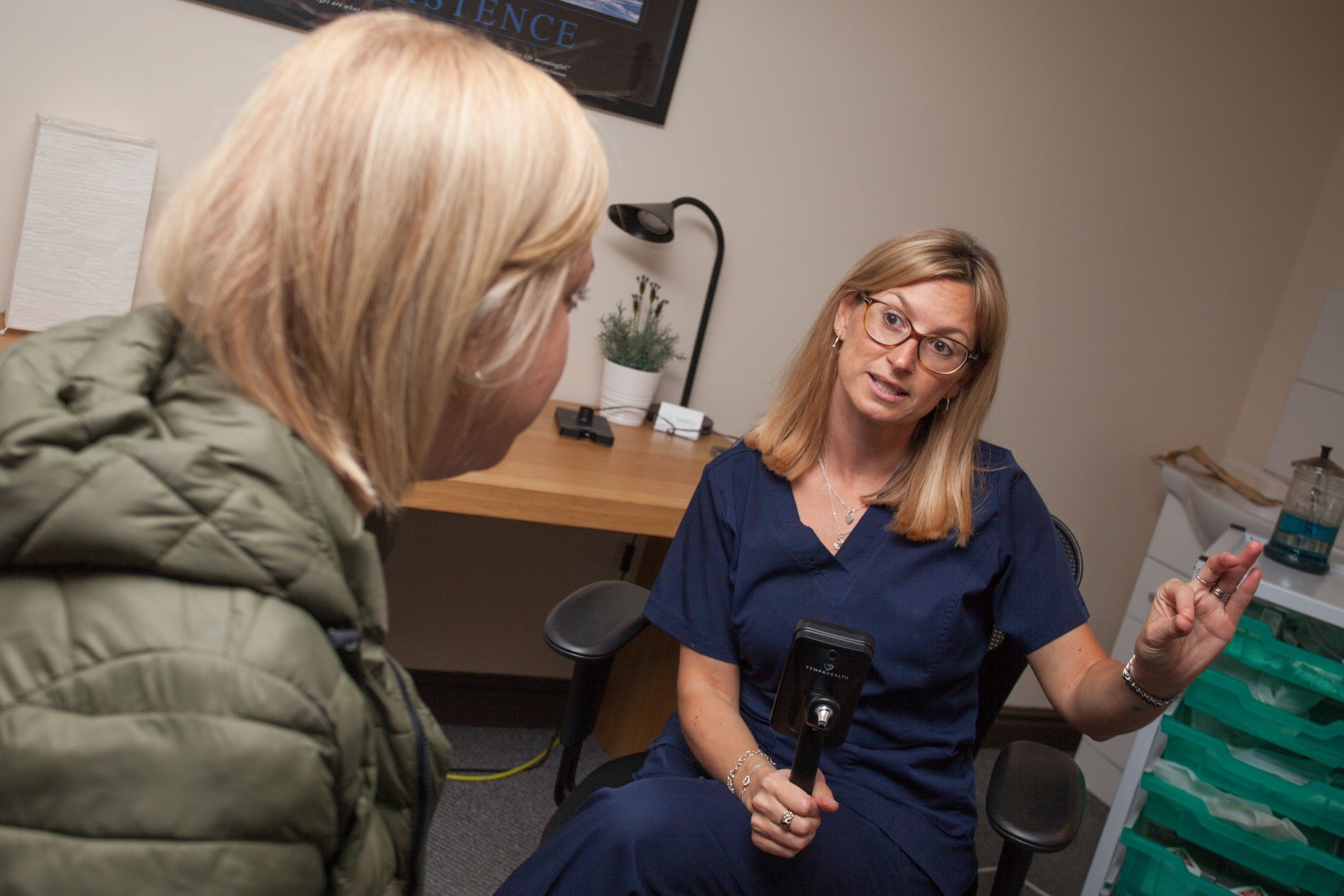Information & Services
WHAT IS EARWAX?
Earwax is completely natural and good for our ears. It has an important job protecting us against pathogens (micro-organisms which can cause infection). It also facilitates the breakdown of dead skin by adding lubrication. Earwax gives us a waterproof entrance to the ear canal and its stickiness helps to catch dust and dirt before it reaches the delicate eardrum.
WHAT SHOULD WE AVOID DOING TO OUR EARS?
I have seen cotton buds pushed through eardrums and wax pushed down into the ear canal so deep that it made people very sick and dizzy (the inner ear contains the organ of balance too). I have also seen squeaky clean ears which regularly become infected because there is no protective wax left in the ear canal.
Our ear canals are able to self-clean. Unlike the skin on the rest of our bodies, the skin in our ear canals sheds in a very special way. The new skin grows from the eardrum (the deepest part of the ear) and as it ages it gradually moves towards the entrance of the ear canal where it naturally breaks down and sheds off.
WHAT ARE THE SIGNS OF EXCESS WAX?
The most obvious symptom is not hearing properly. It may be that certain sounds, like chewing your food, have become extra loud yet you can’t hear the TV. This is called ‘occlusion’ and it happens because the ear actually allows sound out, as well as in. Other symptoms often include: tinnitus (ringing sound in the ears), dizziness, irritation or pain. If you wear a hearing aid and it is whistling, then it is likely you have a build-up of wax. The sound is coming out of the hearing aid, hitting the wax and bouncing straight back out of the ear and into the microphone, setting up a feedback loop.
SO, IF EARS ARE SELF CLEANING, WHY DO SOME PEOPLE NEED WAX REMOVAL?
Occasionally excessive earwax can become an issue. Generally earwax build-up can be caused by two things. Firstly, narrowing or convoluted ear canals can result in the earwax getting stuck. Secondly, excessive earwax can be caused by the individual wearing something in their ears such as, hearings aids, ear plugs or earphones. Alternatively, some people have ear conditions which alter the natural shedding process or they may produce excess wax.
Another main cause of earwax blockage is the cotton bud. The very thing that people use to clean their ears can actually make things worse, by pushing the wax further down the ear canal.
The Solution
Ear examinations – £35
- By examining your ears using an otoscope we are able to determine if wax is present.
- We have the ability to show the patient an image and video of this ear examination.
- Should the clinician have any concerns, those images can be quickly and easily shared via a professional PDF with an ENT surgeon, audiologist or GP.
- Our remote review feature allows access to remote advice and guidance from audiologist and ENT specialist surgeons, if a second opinion is required.
Wax Removal £55
- If wax is present, the clinician will gently remove it using micro suction.
- Micro suction is the gold standard wax removal and is considered safer than other methods such as irrigation.
Hearing Screening Test with onward referral to audiologist available.
- If you do have a hearing loss your clinician may refer you to an audiologist for further investigation. However in many cases, the initial problem could’ve simply been down to the presence of wax itself.
Urgent wax removal £100 (Includes ear examination)
- Call (07872) 579053
Care home/nursing home visits
- Call (07872) 579053
Simple Diagnosis & Treatment
During a Tympa appointment your clinician will be able to assess your ears, and if wax is present, gently remove it with microsuction. Microsuction is the gold standard of wax removal and is considered safer than other methods such as irrigation.
Once wax has been removed a hearing screening can be performed. This will identify whether you have a level of hearing loss. If you do have a hearing loss your clinician may refer you to an audiologist for further investigation.
However, in many cases, the initial problem could’ve simply been down to the presence of wax itself.

